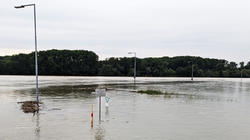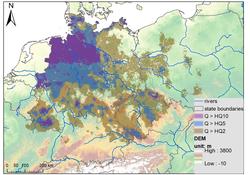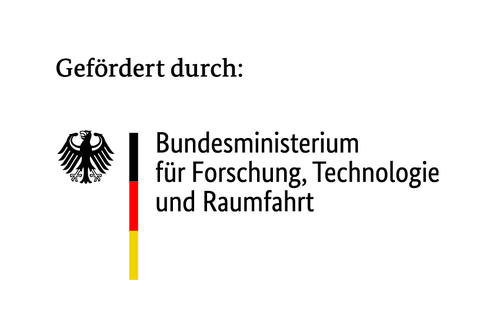ClimXtreme II
Willkommen auf der Webseite von ClimXtreme II, einem interdisziplinären Forschungsnetzwerk bestehend aus 17 kooperierenden Institutionen und 25 Teilprojekten. ClimXtreme trägt mit seiner Forschung zu einem besseren Verständnis von extremen Wetterereignissen in Europa und den damit verbundenen Unsicherheiten im Kontext des anthropogenen Klimawandels bei. Diese Website stellt die zweite Phase von ClimXtreme vor, deren zentrales Ziel es ist, eine Wissensbasis zu erarbeiten, die Entscheidungsträger*innen dabei unterstützt, angemessene Anpassungsstrategien zu verhandeln, zu formulieren und umzusetzen.
ClimXtreme II (2023-2026) wird vom Bundesministerium für Forschung, Technologie und Raumfahrt (BMFTR) im Rahmenprogramm "Forschung für Nachhaltigkeit" (FONA) gefördert. Weitere Informationen über die erste Projektphase (2020-2023) sind auf folgender Seite zu finden.
Event Evaluation
Neuigkeiten
Unsere Mission
In der zweiten Phase von ClimXtreme wollen wir das wissenschaftliche Verständnis von extremen Wetterereignissen und deren Veränderungen im Klimawandel verbessern und darüber hinaus die Wissenschaftskommunikation und die Zusammenarbeit mit Stakeholdern intensivieren.
Wir setzen die Arbeiten aus Phase 1 fort, indem wir die zugrunde liegenden Prozesse, Auftrittshäufigkeiten, Intensitäten und Auswirkungen von Extremwetterereignissen im Kontext des Klimawandels analysieren. Dabei konzentrieren wir uns vor allem auf drei Ereignistypen: Hitzewellen, Starkniederschläge einschließlich Hagel und Windstürme. Aufbauend auf der ersten Projektphase möchten wir zudem die gewonnenen Erkenntnisse für die Praxis besser zugänglich und nutzbar machen, indem wir ein neues interdisziplinäres Teilprojekt integrieren, das zur Kommunikation der gewonnenen Erkenntnisse forscht (siehe ClimXchange). Vor diesem Hintergrund umfasst Phase II auch eine "Post-Event-Assessment Group" (PostAG), die Extremereignisse während der Programmlaufzeit analysiert und die Ergebnisse zeitnah veröffentlicht (siehe Events). Darüber hinaus verstärken wir die Zusammenarbeit mit Interessengruppen und Praxisakteuren, um die Schwerpunkte der einzelnen Projekte auf Aspekte auszurichten, die sowohl hinsichtlich ihrer wissenschaftlichen Erkenntnisse als auch bezüglich der Bedarfe der Interessensgruppen als relevant zu erachten sind. Auf diese Weise sammeln wir praktisches und zugängliches Wissen, um den Entscheidungsprozess und Anpassung an Extremereignisse zu unterstützen.
Zusätzlich zu den spezifischen Ansätzen und Schwerpunkten der 25 Teilprojekte definieren wir drei übergeordnete Forschungsfragen zur Bündelung der Projekterkenntnisse:
-
Was sind die Gründe für die Unsicherheit in der sich ändernden Häufigkeit und Intensität von einzelnen und multivariaten Wetterextremen im Zuge des Klimawandels?
-
Was sind die potenziellen Wahrscheinlichkeiten und Risiken von Wetterextremen im Klimawandel auf regionaler bis lokaler Ebene, und was sind ihre spezifischen Bedingungen oder Entwicklungen im Klimasystem, die ihre veränderte Wahrscheinlichkeit anzeigen?
-
Inwieweit bewirken menschliche Aktivitäten eine systematische Veränderung des Auftretens dieser Wetterextreme (Attribution)?
Unsere Struktur
Zur Erforschung der Veränderungen von Extremereignissen im anthropogenen Klimawandel ist der Verbund ClimXtreme in vier Module mit jeweils thematisch spezialisierten Teilprojekten gegliedert. Diese aus Phase I übernommene Struktur gewährleistet die Spezialisierung der einzelnen Module und Teilprojekte sowie einen effizienten wissenschaftlichen Austausch zwischen den Projekten. Modul A befasst sich mit den physikalischen Grundlagen und Prozessen, die Extremereignisse wie Starkniederschläge, Hitzewellen/Dürren oder Stürme beeinflussen. Modul B untersucht und quantifiziert die langfristigen Veränderungen und statistischen Eigenschaften dieser Merkmale. Darüber hinaus zielt Modul B darauf ab, die Unsicherheiten bei der Zuordnung und Vorhersage solcher Ereignisse zu reduzieren und die anderen Module durch statistische Methoden zu unterstützen. Modul C befasst sich mit den Auswirkungen von Extremereignissen und konzentriert sich auf die Kombinationen und Wechselwirkungen von meteorologischen Faktoren und nicht-meteorologischen Faktoren wie Exposition und Vulnerabilität, die zu Auswirkungen wie Hochwasser, Windwurf oder Ernteverlusten führen. Modul C integriert auch das neue interdisziplinäre Projekt ClimXChange zur Wissenschaftskommunikation. Die Projekte in Modul D koordinieren und unterstützen das Software- und Datenmanagement, die Modellierung und die standardisierte Bereitstellung methodischer Verfahren für das gesamte Konsortium und bilden damit die datentechnische Basis für dessen wissenschaftliche Arbeit. Damit ermöglicht Modul D einen optimalen Wissens- und Informationstransfer zwischen den Gruppen und erhöht die Transparenz der wissenschaftlichen Aktivitäten des Netzwerks. Detaillierte Informationen zu den Modulen und Teilprojekten finden Sie auf den jeweiligen Seiten.









